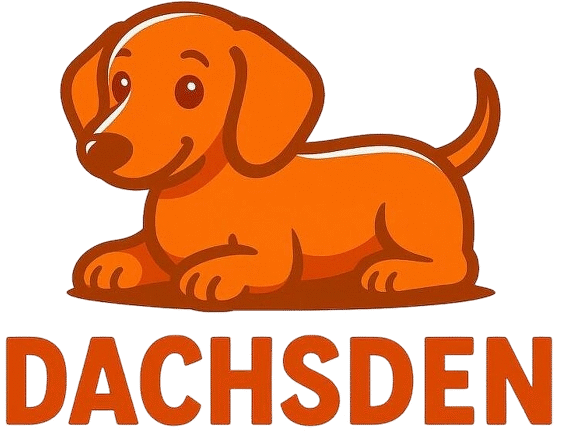Are Dachshunds Really Naughty? The Truth Behind Their Mischief
As a long-time dachshund owner, I can say these little sausage dogs have a unique charm that keeps capturing our hearts—even when they’re being a bit naughty. Their playful energy and curious antics often build a reputation that’s both entertaining and mischievous. This blog post will explore whether these lovable dogs are genuinely as cheeky as their actions may suggest, or if there’s more to their spirited personality than meets the eye.

Are Dachshunds Really Naughty? – Short Answer
Dachshunds can seem naughty due to their curious, independent, and playful nature. However, with consistent training and positive reinforcement, their behavior is manageable and often just part of their charming personality.
Playful, Spirited & Curious by Nature
Dachshunds are often seen as naughty, but that reputation mostly comes from their playful, spirited nature. With high energy levels and endless enthusiasm for life, their behavior can easily be misconstrued as naughtiness. These clever dogs have a strong zest for play, and sometimes a mischievous streak shows up because of their strong desire to engage in interactive activities with their owners.
This can especially be the case when they interact with other animals Do Dachshunds Get Along with Other Pets? is a common concern, but often they’re just curious, not confrontational.
They’re also inherently curious, thanks to their hunting background, which contributes to a keen sense of smell and a natural inclination to explore their surroundings. This curiosity may result in the occasional exploration of forbidden territories like a scavenger hunt through the rubbish bin, but it’s important to view such actions as an expression of their inquisitive mind rather than deliberate troublemaking.
Why Your Dachshund Might Be Acting Out
Why Dachshunds Demand Attention
Dachshunds are known to crave attention and affection from their human companions, and when they feel neglected or bored, they often resort to attention-seeking behaviours such as barking, digging, or stirring up mischief. These actions are not always a sign of bad behavior but can reflect unmet emotional or physical needs.
In our home, for example, our dachshund has a daily burst of energy around 7-8pm. He becomes noticeably boisterous and eager to play, and if left unattended, he’ll show his dissatisfaction through repetitive, sometimes frustrated, barking. This ties into the question many owners ask: Why Do Dachshunds Bark? often, it’s just their way of expressing unmet needs.
Providing the Right Stimulation
To prevent undesirable behaviors, it’s essential to address a dachshund’s daily need for both mental and physical stimulation. Regular walks, interactive toys, and structured activities help channel their high energy into more positive ways. One tool we found especially effective is the Lickimat—a creative product designed to reduce boredom, manage anxiety, and promote calmer behavior through licking.
It also doubles as an alternative to a slow feeding bowl, turning mealtime into a more mindful and engaging experience. Investing in chews, puzzles, and play-based challenges can significantly enhance your dachshund’s day and reduce their tendency to act out when they need your attention
The Stubborn Streak: Not Naughty, Just Independent
Dachshunds are a breed known for their inherent stubbornness, which is simply a part of their nature. Some owners may interpret this independent streak as naughtiness, but this trait is often what gives them their quirky charm. It can even influence how they interact with children: Are Dachshunds Good with Children? is worth exploring if your home has little ones.
Their stubborn traits can sometimes bring training challenges, especially if owners fail to establish clear boundaries or don’t stick to a consistent approach. However, these intelligent dogs can learn quickly and respond well when the training is done right. Consistency and patience are the key to curb any undesirable behaviours and help your dachshund thrive as a well-mannered, if still a little cheeky, companion.
Smart Training Solutions for Mischievous Behavior
Managing a dachshund with mischievous behavior requires smart solutions grounded in patience and consistency. Instead of punishment, using positive reinforcement—like treats, praise, and clickers—can help them form effective habits. These dogs tend to respond well when training feels like play, so interactive toys and praise-based methods work beautifully.
Equally important is consistency with commands, rules, and corrections. Setting clear boundaries early—through tools like crate training and designated space rules—gives structure and guidance to help your dachshund learn what’s expected. With the right mix of techniques, communication, and routine, you can turn a cheeky pup into a disciplined companion.
How to Build a Routine Your Dachshund Can Thrive In
Creating a structured daily rhythm for your dachshund—with time for walk, play, rest, and feed—lays the foundation for a balanced lifestyle. These dogs thrive on consistency, so building a routine that matches their energy levels can improve both their behavior and overall wellness.
Mornings and evenings are often the best times of day for training or active play. By integrating short obedience sessions into everyday fun, your dachshund gets mental stimulation and a healthy sense of predictability. A well-structured schedule with engagement, calm, and reinforcement not only supports good habits, but also nurtures a truly smart, happy companion.
When “Naughty” Becomes a Problem: Red Flags to Watch
Sometimes what seems like typical naughty behavior in a dachshund—like chewing, barking, or lunging—can actually signal deeper emotional or mental health issues. If this includes excessive vocalization, you may wonder Why Do Dachshunds Howl?—especially if it’s more intense or frequent than normal.
Red flags like excessive aggression, anxiety, or household destruction shouldn’t be ignored. These behaviors often stem from stress, fear, or unresolved frustration, and can escalate if not addressed.
Recognizing the signs of true behavioral disorders versus everyday misbehavior is key. If your dog shows consistent, intense reactions to small triggers, it’s time to consult a professional trainer or vet. Getting an expert evaluation ensures your dog’s emotional needs are met and prevents the situation from worsening. Early intervention and the right support can make all the difference.
Dachshund-Proofing Your Home
Creating a dachshund-proofing plan for your home is essential to manage their curious and sometimes mischievous nature. Start with simple prevention tips—secure trash bins with tight lids to deter rummaging, and clearly define no chew zones to prevent damage from teething or boredom-driven nibbling.
To offer healthy outlets for their drive, switch from standard bowls to puzzle feeders, which encourage mental stimulation during mealtime. Provide safe spaces and durable toys that cater to their instinctual behaviors. These small adjustments help create a structured indoor environment, set clear boundaries, and prevent destructive behavior before it starts.
Final Thoughts: Naughty or Just a Little Extra?
In the world of dachshunds, their reputation for being a little naughty often hides the endearing qualities that make them such beloved companions. Their playful spirit, boundless curiosity, and occasional mischievous antics form the unique charm that owners truly cherish, despite the negative stereotypes.
If you’ve heard the phrase Why Are Dachshunds Considered the Worst Breed?, it’s likely based on misunderstood traits rather than facts.
By understanding and embracing these traits with patience and steady positive reinforcement, you’ll begin to appreciate the delightful quirks that make dachshunds who they are—lovable, energetic, and undeniably one-of-a-kind.






